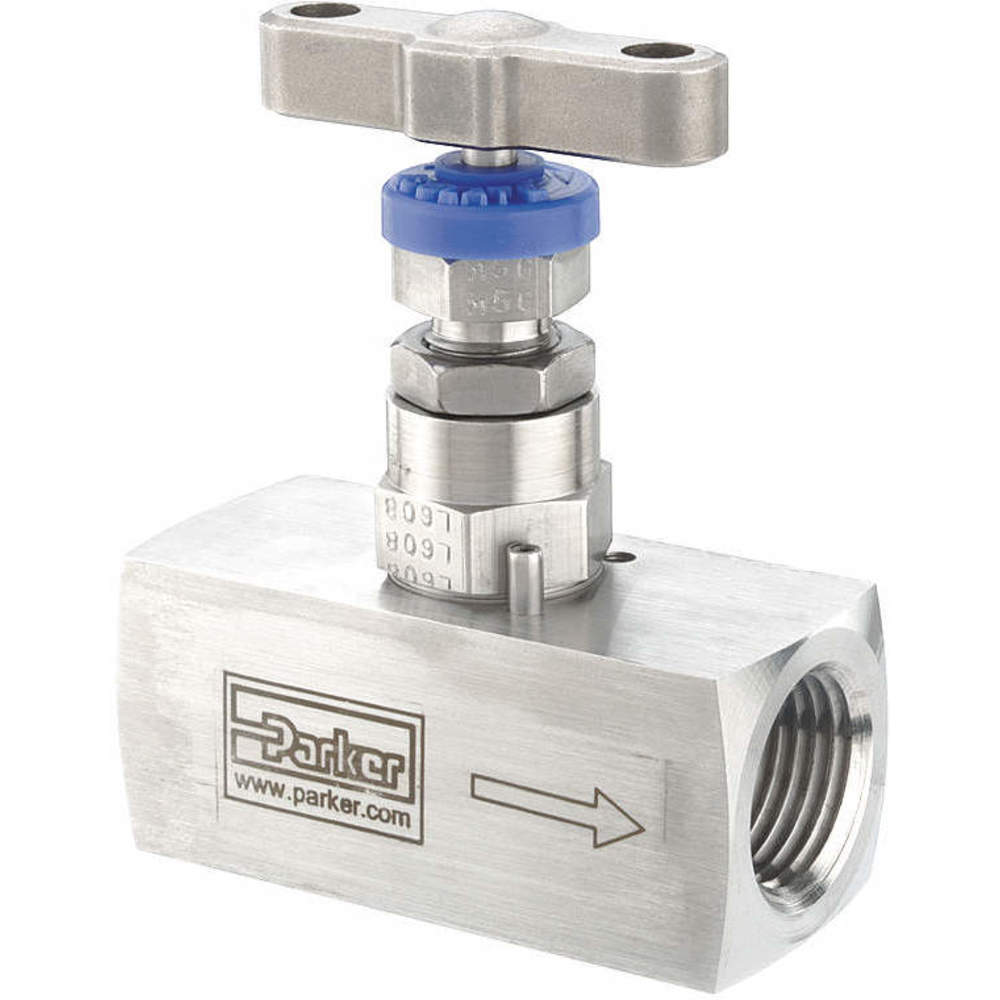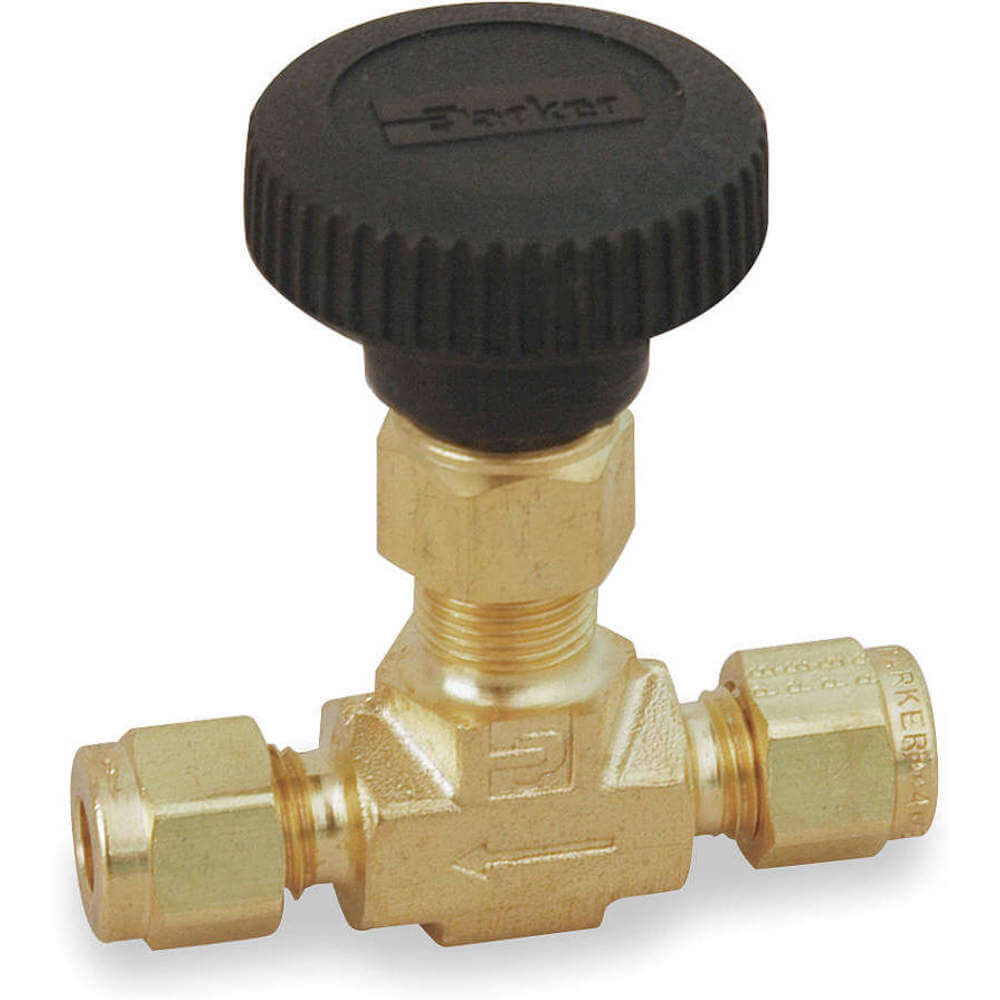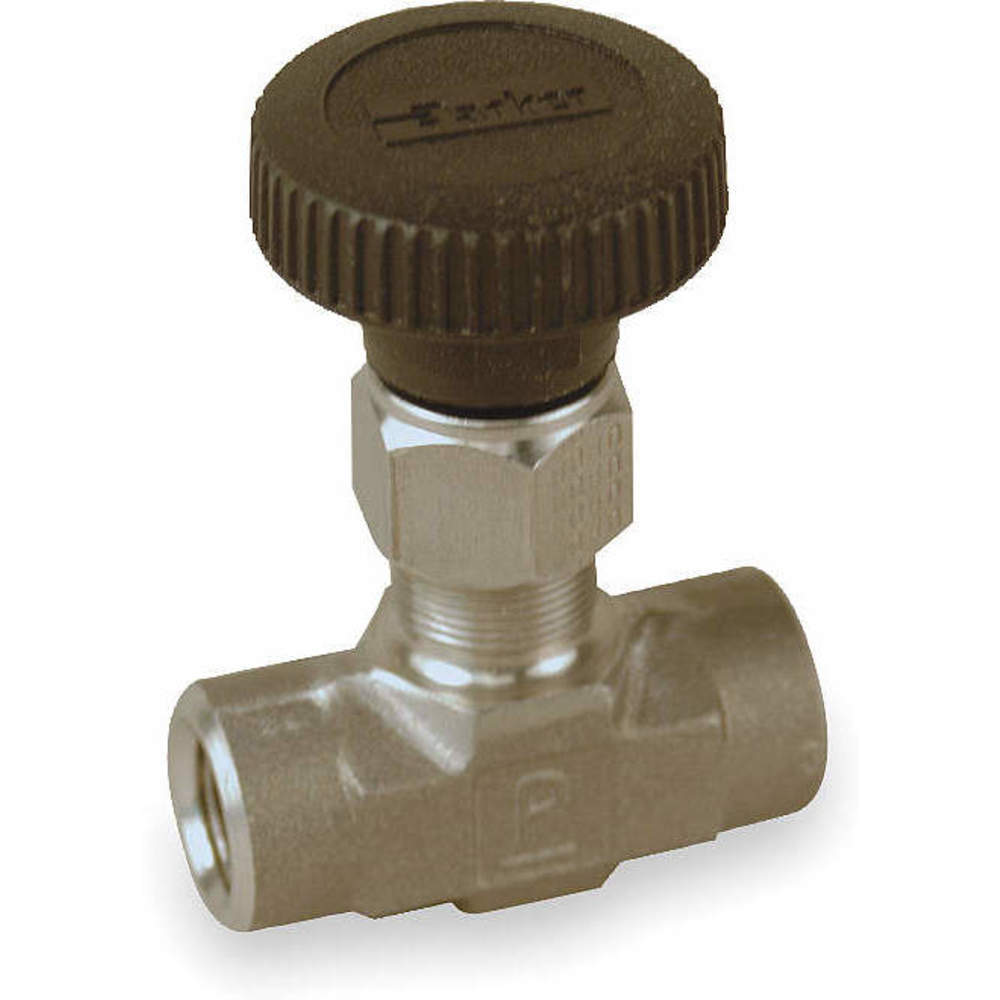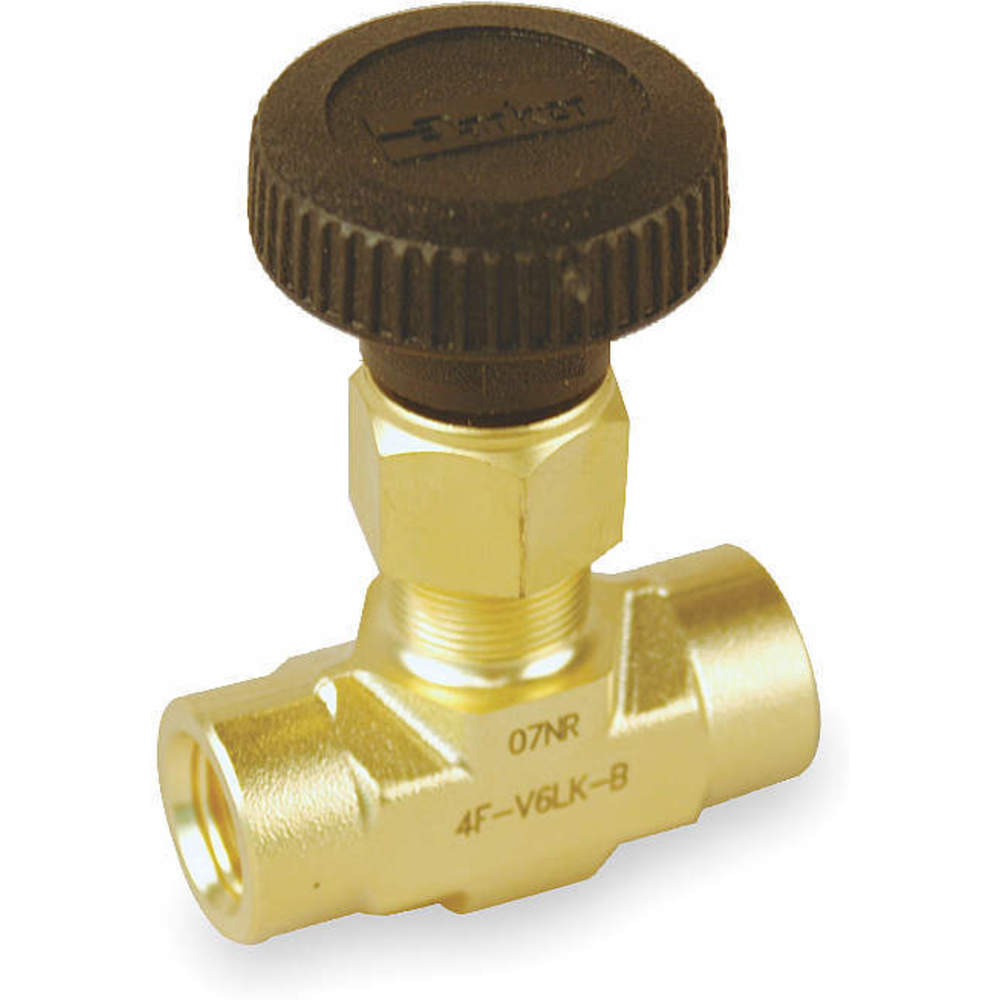Parker needle valves use a slender needle-shaped plunger that fits in a conical seat to restrict or allow flow. They control the flow of liquids or gases in metering applications. Parker HNVS8FF needle valve is intended for isolation and regulation in low-flow applications.
Working Mechanism:
- Adjustment on this needle valve should be carried out at zero pressure.
- Distance between the plunger and the valve seat is controlled by a handwheel.
- With one turn of the handwheel, the plunger lifts and opens the valve, allowing fluid to pass through.
Features:
- Parker HNVS8FF bar stock needle valve featuring heavy-duty stainless steel construction for use with fluids having pressure ratings up to 6000 psig
- Equipped with a self-centring, non-rotating spindle tip which provides bubble-tight shutoff and a backstop spindle which prevents blowouts
- Designed with a low-torque T-bar handle for enhanced regulation and control
- Panel and base mounting options for easy installation and dust cap to prevent ingress of contaminants
- Comes with PTFE gland packing for extreme temperature & chemical tolerance, as well as to provide secure sealing
- Ideal for gaseous applications when used with soft-tipped seating
- Colour coded for easy identification
- Integrated with bonnet locking pins to ensure positive lock & vibration-free performance
Standards and Approvals:
Frequently Asked Questions:
Q. What are the precautions one must take while operating a needle valve?
A. - Do not adjust the valve while under pressure.
- Never use any mechanical aids such as wrenches or extensions to operate handles.
- Never scratch the markings on the valve body.
Q. Why are needle valves bi-directional?
A. The bi-directional design enables regulated airflow in one direction and free airflow in the other.
Q. What is the difference between a motor and a gear motor?
A. Gear motors can alter the speed or torque of a motor based on mechanical gears.
Q. Does Dayton 1LPN8 gear motor come pre-lubricated?
A. The unit is greased to provide an oil film that prevents the rotating element and races from harsh metal-to-metal contact.
 Change Country
Change Country




